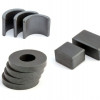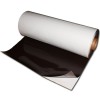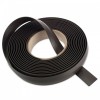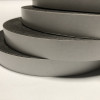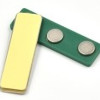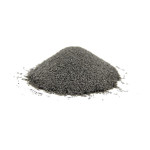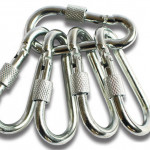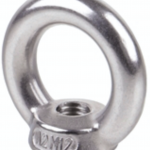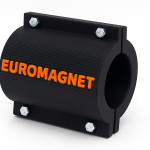Magnets up to AZ!
Permanent magnet: Ferromagnetic is the material that creates a permanent magnetic field in its environment without transmitting permanent electrical energy, which can only be eliminated by a strong external counterfield.
Reversal process (for magnetization) : the reversible part of the magnetization process , which joins the irreversible process at high field strength. This is where Weiss domains with the same potential energy are aligned and arranged, which requires a significant expenditure of energy. At low field strength, only the so-called in the single-domain case, a clear transition process can be observed. In this case, the transition of the entire volume does not occur sequentially, but simultaneously and therefore two to three orders of magnitude faster. The intermediate state between such "coherent" reversal and wall displacements is called the "incoherent" reversal process.
Curie point / Curie temperature: Ferromagnetic and ferrimagnetic properties depend on the distance between atoms with uncompensated electron spin, and therefore on the temperature. If in the Weis region the thermal energy becomes comparable to the potential energy of the atomic moments, then ferromagnetism ceases, it passes into paramagnetism, in which the kinetic energy of the atoms becomes predominant over the exchange energy and there is no longer a shared spin orientation outward. Madame Curie established the Tc temperature at which this process takes place for pure iron at 778 degrees Celsius. For iron alloys, this temperature is lower, for most alloys it is above 100 degrees Celsius, i.e. above the operating range of connections and components used in practice.
Absolute permeability: absolute permeability is the quotient of induction and field strength. The permeability of the vacuum is the quotient of the induction B0 in the vacuum and the prevailing field strength H.
Shape anisotropy: due to energetic reasons, it causes the magnetization to arrange itself along the longitudinal direction of the specimen.
Alnico alloy: a high energy density alloy used to make permanent magnets, made from aluminum, nickel, and cobalt.
Anisotropic energy: the energy required to rotate the magnetization vector of an anisotropic ferromagnetic specimen from the "easy direction" to the "heavy direction".
Anisotropy: a body is anisotropic if it does not show the same properties in all spatial directions, i.e. it can be shaped or magnetized differently depending on the direction.
Anti-ferromagnetism: this is the name given to the general non-magnetic state that is created in oxide magnetic materials by the fact that the saturation magnetization of the two sublattices is equal but of opposite polarity.
Barium ferrite: an oxide magnet with the composition BaO*6Fe2O3, which has very good hard magnetic properties due to its strong hexagonal anisotropy.
Diamagnetism: materials with relative permeability less than 1 (e.g. copper, silver, glass, water, zinc, bismuth and almost all gases and liquids) are called diamagnetic materials after Faraday. These materials increase their energy in external space, so they are affected by a force in the direction of the smaller field strength. In their atomic structure, the electron shells are completely filled.
Surface anisotropy: occurs when some components are missing on the surface of the material in an otherwise symmetric crystal structure inside the material.
Ferrimagnetism: the magnetism of ferrites, which is created as a result of the antiparallel orientation of the free spin moments of two sublattices. The magnetization pointing outwards is smaller than that shown by metal ferromagnetic materials.
Ferrites: mostly oxide magnetic materials with a spinel crystal lattice structure. Their general formula is MeO*Fe2O3, where Me is a divalent ion (e.g. Mn, Mg, Co, Ni, Zn, Fe11). Their technical importance is very high in high-frequency broadcasting technology and data processing: they are used to make transmission transformers and storage cores.
Ferromagnetism: a magnetic solid-state effect that is bound to a crystal lattice, and can be observed above all with Ni, Co, Fe, and their alloys. The interaction between atomic magnets is so strong that despite thermal motion, they spontaneously (without an external field) align parallel to each other within certain ranges (Weiss range). High relative permeability results from the easy rotation of the magnetic moments of the uncompensated electron spins on the shells.
Hysteresis: we mean an effect that remains even after the cause of the process has been removed. In magnetism, this means that induction follows the increase and decrease of the field strength in a different way. The magnetic element domains do not return to their original state after the excitation is completed. The reason for this can be found in the irregularities in the crystal structure. The relationship between AB and H is illustrated geometrically with the hysteresis loop.
Hysteresis heat: the amount of heat that is transferred from the remagnetizing field to the test body and from there to the environment during a single isothermal cycle through the hysteresis loop. The amount of heat transferred per magnetization cycle and per volume unit is greater, the higher the Br and Hc values of the material, i.e. high for permanent magnets.
Hysteresis loop: the relationship between the magnetic field strength and the induction for the complete remagnetization cycle of the ferromagnetic material from positive saturation to negative saturation. This center-symmetric curve does not coincide with the virgin curve, because due to hysteresis, one H-value has two M magnetizations, or The induction value B depends on whether the field excitation changes from the positive or negative saturation value. The curves AB=f(H) and M=f(H) differ from each other by the amount 0H, i.e. in the case of the latter, when saturation is reached, the branches run exactly parallel to the H-axis. The shape of the loop depends to some extent on the condition of the material and the measurement method used.
Heat treatment: this refers to all the thermal engineering processes that are carried out, especially for ferromagnetic alloys, in order to create specific internal stresses and grid arrangements, which decisively determine the magnetic properties and, where applicable, the anisotropy.
Ideal hysteresis loop: this type of loop is also called an ideal linear loop with a saturation elbow. Such is the center-symmetric ideal magnetization curve. The ideal square loop takes hysteresis and saturation into account, but not the frequency dependence of the magnetic material.
An ideal magnetization curve: the slope of two constants consists of a straight line. It takes saturation into account, but not the frequency dependence of the magnetic material.
Induced anisotropy: it is created by the "treatment" of an otherwise isotropic material in a magnetic field. Eg: the magnetic material is tempered in a magnetic field below the Curie point.
Law of induction: the basic law of magnetodynamics, according to which the temporal change of the flux enclosed by the wire loop induces an electric voltage in the loop.
Isotropic material: it has the same properties in all spatial directions. Hard magnetic materials: materials with an Hc value greater than 790 A/m. For example: the materials of permanent magnets, magnetic tapes and magnetic discs.
Initial permeability: it can be measured at the beginning of the magnetization curve with a very small control of the magnetic material, it is called permeability.
Exchange energy: the part of the total free energy of the ferromagnetic crystal lattice that depends only on the angle between adjacent spins, but is independent of their position in the crystal lattice.
Exchange force: the force that creates the parallel orientation of the atomic moments. It is quantum mechanical in nature and disappears when the Curie temperature is reached.
Coercive field strength (Hc): the field strength that is opposite to the direction of the excitation that caused the previous saturation - the remanent induction remaining from magnetization, or necessary to remove magnetization - it can generate excitation. (The intersection of the hysteresis loop and the H-axis.) If the induction is B=0, then +Hc or –Hc field strength prevails. A distinction must be made between B – H diagram BHC and M – H diagram MHC coercive field strength. Only MHC is material constant. For soft magnets, BHC is MHC, but for hard magnets, the difference is not negligible.
Coherent reversal: uniform reversal of all spins during remagnetization of thin magnetic layers. Crystal anisotropy: anisotropy resulting from the lattice structure. The permeability e.g. the diagonal of the body of the cube is different than along the edge of the cube.
Annealing: heat treatment of the magnetic material, which takes place either for further mechanical processing (intermediate annealing) or to achieve a defined crystal structure (final annealing).
Air gap: a working air gap must necessarily be placed in a magnetic circuit containing two components that move relative to each other (e.g. motor, signal detector, collector or suction magnet). The accompanying "shearing" decisively changes the measured values. In order for these values not to deteriorate significantly, the ratio of the magnetic mean path length to the air gap length should be as large as possible. An air gap can also be inserted into magnetic circles without moving parts in order to improve the characteristics of the circle. (e.g. for the iron cores of filter circuits, where the air gap increases the goodness factor or improves temperature stability.
Demagnetization: a procedure to eliminate remanent induction.
Demagnetization process: the demagnetization factor Nt is used to determine the demagnetizing field strength H0, which is formed by pole formation at the ends of the open magnetic circuit and the external field strength Ha weakens to the value Hi actually acting inside the circuit. Hi=Ha-NtM. Nt is also the slope of the demagnetization or shear line in the BH field: Nt=tg The angle is the angle of the shear (demagnetization) line measured to the B-axis.
Lenz's law: the general law of physics that every effect causes a counter-effect. The induced electric voltage is also in such a direction that it tries to prevent changes in the field, i.e. "inertia" occurs in the coil against the increase and decrease of the induction. The measure of inertia is the self-inductance L of the coil.
Lorenz force: the force exerted by a magnetic field on a moving conductor. Impulse-like magnetization: magnetization of the permanent magnet in the short-circuit current surge transformer yoke.
Magnet: a body that creates a magnetic state in its environment. For a formal analogy with electrostatics, we can speak of a magnetic dipole, since at the ends of each magnet there are two poles of equal strength, but oppositely "charged", which exert a force on another magnet.
Magnetic anisotropic energy: the energy determined by the anisotropy in question. This is described by the anisotropy constants. Magnetic anisotropy: a magnetically isotopic body is magnetized to the same extent in all directions by a field strength of the same magnitude. In the magnetically anisotropic body, we can find an advantageous "easy" direction in which the body can be magnetized very easily. The anisotropy of a body can have many different causes. The measure of anisotropy is the anisotropy constant K (energy/volume).
Magnetic materials (soft magnetic materials): magnetic materials for which the coercive force Hc is usually below 100 A/m are called magnetic materials. Soft magnetic materials can be linear or square hysteresis loops. Magnetic shielding: magnetic lines of force always follow the path of least magnetic resistance, even if it means a detour from a geometric point of view. In this way, a highly permeable material from a space, e.g. it can “suck” the lines of force from inside the shielding hood.

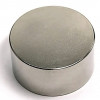
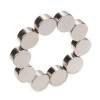

-100x100w.jpg)
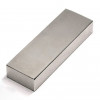

-100x100.jpg)

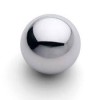
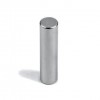
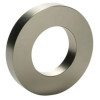
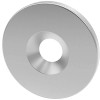

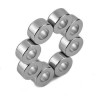
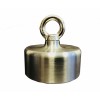
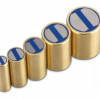



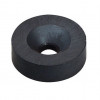
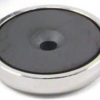

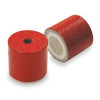


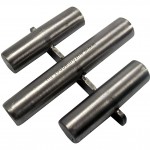

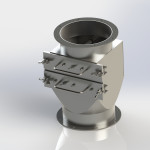
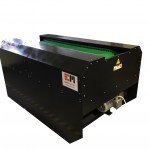

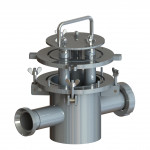
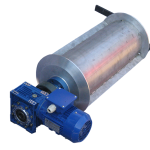
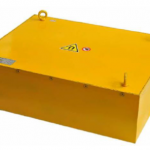
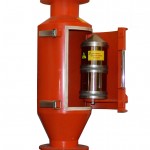
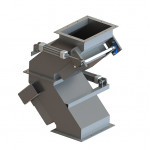
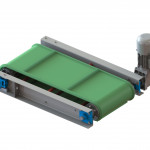
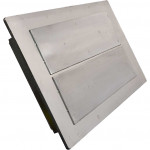

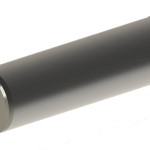
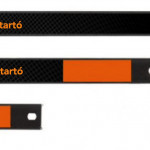

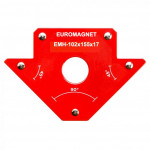
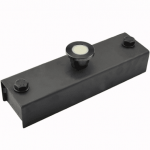
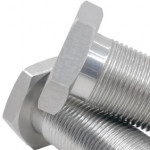

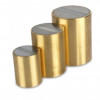
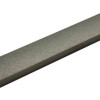
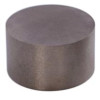
-100x100h.jpg)
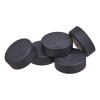



-100x100.jpg)
